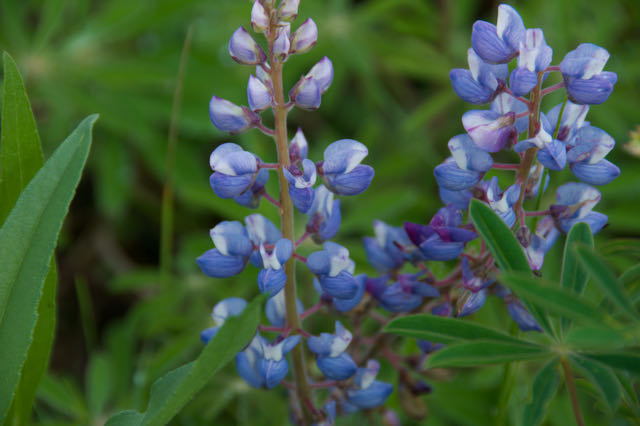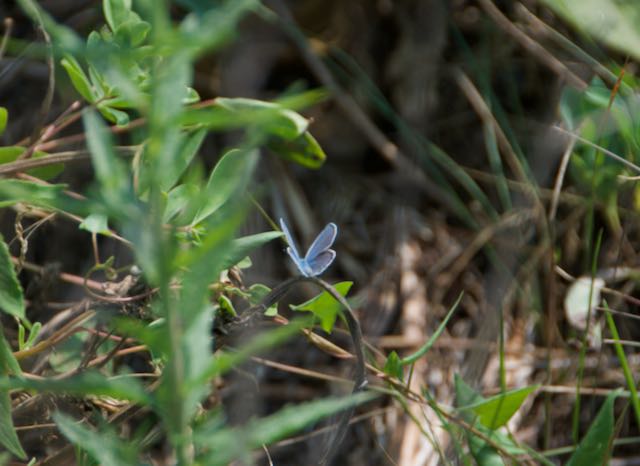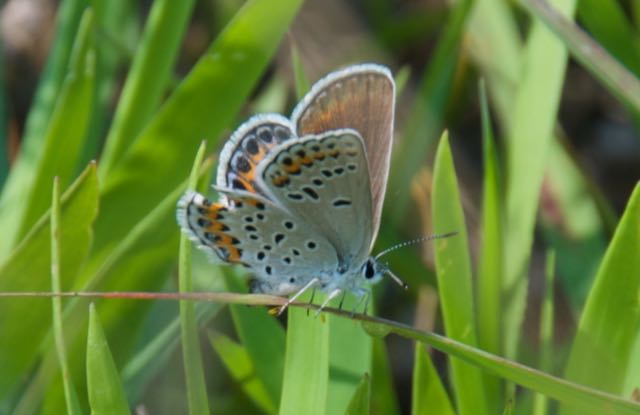Choose Lupine Wisely

Shakespeare famously penned, “What is in a name? A rose by any other name would smell as sweet.” Romeo was speaking of family names, not flowers. Those of us in Wisconsin who want to help endangered Karner Blue butterflies recover their numbers have, for several decades, raised Eastern Wild Lupine, also called Sundial Lupine (Lupinus perennis). This is the exclusive host plant for Karner blues. They lay their eggs on the foliage. As the eggs hatch, the larvae spend the next several weeks feeding on L. perennis leaves. According to the Wisconsin DNR, the historic Karner blue range includes the central sands region along with sand barrens in the northwest portion of the state. The United States Fish and Wildlife Service has taken a leading role nationally in Karner blue butterfly recovery.
Sundial Lupine require sandy soil with full or partial sunlight. They do not compete well and do not germinate will in thatch. The solution is a regular regime of prescribed fire. Burning fields and woodlands with lupine increases sunlight to the soil and reduces competition. In addition, the ash provides a shot of quick release fertilizer that stimulates growth. Karner blue butterfly abundance tracks closely with that of the Sundial Lupine on which they depend; more lupine, more Karner blues.

The Problem
Unscrupulous greenhouses are marketing Western Lupine (L. polyphullus) in the upper midwest as Wild Lupine. For generations, that common name referred to the native species whose latin name is Lupinus perennis. Its other common name is Sundial Lupine.
Tragically, Western Lupine not only does not serve the host needs of Karen blues. These plants are actually poisonous to the larvae. Unfortunately, Karner blues cannot distinguish between the species and given the chance will lay their eggs on the L. polyphullus.
Making things worse, Western Lupine can hybridize with Sundial Lupine to create a hybrid that is also not hospitable to Karner blue butterflies. Simply planting L. polyphullus near Karner habitat can have devastating consequences for nearby Karner populations.

What You Can Do
If you live in the range of Karner blue butterflies, which includes states from Minnesota to New York, do not plant Western Lupine (L. polyphullus). Check the label on any seeds or plants called Wild Lupine before you purchase them. Look for the name Sundial Lupine (L. perennis) and only plant those in your garden or restoration planting. Reputable local sources for Sundial Lupine include: Prairie Nursery, Prairie Moon Nursery, Agrecol Native Seed and Plant Nursery, and Taylor Creek Restoration Nurseries.
The Wisconsin DNR has a volunteer monitoring program for Karner blue butterflies. Learn how to identify Karner blues and perform systematic surveys to help scientists track recovery efforts across Badgerland.
There are several programs that can assist landowners in their efforts to recover Karner blue butterflies. The Wisconsin DNR has a Landowner Incentive Program that provides technical assistance and cost sharing. The Partners in Fish and Wildlife program also provides technical assistance and grants for restoration projects. USFWS partners with Pheasants Forever chapters in their efforts to raise awareness and engage private landowners. Contact Brendan Woodall for assistance.
